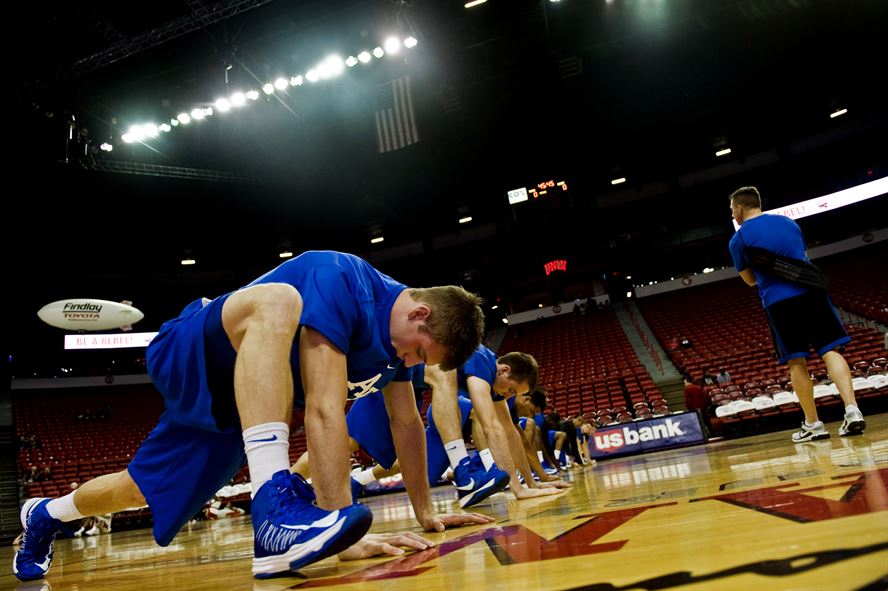
By Kira Sparks |
Your heart is racing, your palms are starting to sweat, your mind feels like it is traveling a mile a minute, and your stomach feels like it’s on a roller coaster ride. We’ve all been there. Anxiety creeps in like monsters under the bed, and before we know it, our performance is on the rocks. Our ability to focus becomes difficult and we’re racing to recover, to push that monster out of our heads. But is this really necessary? After all, not all monsters are bad.
Anxiety is something that all of us will experience in our lifetimes. If you haven’t yet, you will. Anxiety is especially prevalent in sport. Every sport has those moments where we can feel anxiety increasing; taking a penalty shot, standing on the free throw line, preparing for a chip onto the putting green. After all, isn’t that why timeouts are called before specific plays are made – just to maximize the effects of anxiety. Each of these moments serves as a standalone instance where anxiety is spiking and can become detrimental. But is anxiety a bad thing? When anxiety is brought up in relation to performance, it is usually paired with a negative connotation. Anxiety is something that we need to push down, ignore, or get rid of. But what would happen if we embraced it? There is power in embracing the butterflies. Elite athletes report using anxiety to their advantage seeing it as facilitative during performance (2).
Anxiety can both be utilized to reach the elusive “zone.” Yuri Hanin (1) developed what is known as individualized zone of optimal functioning (IZOF) which integrates anxiety and arousal in relation to performance. The theory is based on the idea that anxiety and arousal can be used to achieve optimal performance by carefully controlling its effects. Anxiety and arousal are merely tools which athletes can use and manipulate to help them “get in the zone.” The problem is, how do we control anxiety?
Mental skills are a common, time-tested method that athletes use to help them control the effects of anxiety, both cognitive and physiologically. Exercises such as deep breathing, mental imagery, pre-performance routines and goal setting, aid athletes in reining in the panic and anxiousness that accompanies increased levels of anxiety. These skills can help the athlete remain present and aware of their physical and cognitive reactions to appropriately counter and control the negative effects that are associated with anxiety.
So the next time you’re headed out onto the court and you can feel those butterflies start to flutter in the pit of your stomach, take a deep breath, see yourself performing at your best. It’s going to be uncomfortable, often isn’t easy, and it takes practice. But, if we’re going to put our bodies to work, why not put our minds to work as well? After all, our mind is playing the game too.
References
Hanin, Y. L., & Stambulova, N. B. (2002). Metaphoric description of performance states: An application of the IZOF model. The Sport Psychologist, 16, 396-415.
Mellalieu, S. D., Hanton, S., & Shearer D. A. (2008). Hearts in the fire, heads in the fridge: A qualitative investigation into the temporal patterning of the precompetitive psychological response in elite performers. Journal of Sports Sciences 26(8), 811-824.
Kira Sparks is a master’s student in the Sport and Exercise Psychology program at Springfield College in Springfield, Mass. Her own experience with anxiety in sport has driven her interest in anxiety and coping in performance.